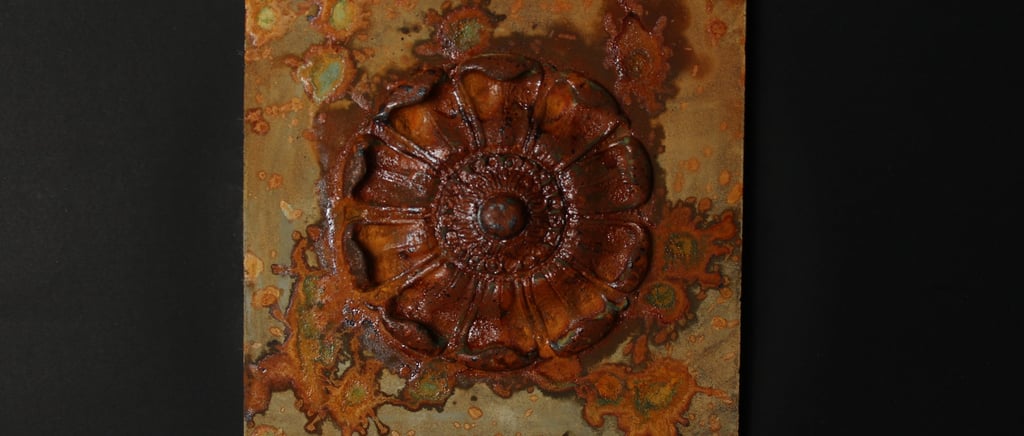Where the Earth Paints Itself — The Origins of Reactive Color
Before the Brush, There Was Rust


Before the Brush, There Was Rust
Long before humans learned to grind ochres or mix pigments, the Earth was already painting. Iron turned red beneath rain, copper shimmered green in the air, and manganese darkened stone faces with purple smears. These were not accidents — they were nature’s first murals.
Every cliff streak, every weathered ruin, every rusted nail on a concrete path carries the same quiet chemistry: oxidation, reaction, transformation. The planet itself was the first artist, and time was its collaborator.
When we talk about Reactive Patinas™, we’re not inventing something new. We’re remembering. We’re tracing our way back to a story that began hundreds of millions of years ago — when blue-green algae filled the air with oxygen, and the world first learned how to bloom in color.
From the Foundry to the Field
For centuries, artists and metalworkers sought to control this process — to coax color out of time. Bronze casters burned vinegar and smoke into green verdigris. Sculptors rubbed ash and salt into statues to summon the look of age. Patina was not decoration; it was proof of life.
In the modern age, we lost that reverence. Rust became a flaw. Stains were seen as defects. But deep inside the materials — in the minerals and ions of cement, copper, and iron — the same chemistry waited patiently for rediscovery.
That rediscovery became Reactive Patinas™
Cement: The Forgotten Canvas
Concrete is the most widespread material humanity has ever made. It builds our bridges, roads, towers, and homes — yet it has rarely been treated as art. Paint sits on top of it. Pigments hide it. But inside, cement holds everything needed for beauty: alkalinity, porosity, and memory.
In the right conditions, when water, metal salts, and CO₂ meet its surface, something remarkable happens. The concrete begins to paint itself. Colors bloom from within — blues, greens, ochres, and blacks that seem grown rather than applied.
That is the language of Reactive Patination™.
It’s chemistry as choreography — a dance of moisture, minerals, and time. The surface is not coated; it’s transformed.
A Dialogue Between Maker and Matter
Reactive color demands patience. You don’t paint — you invite. You let the surface speak. Each reaction is a conversation between what you imagine and what the material decides to become.
No two outcomes are the same. A change in humidity, a touch of heat, a breath of carbon dioxide — all alter the story. What appears on the surface is not a controlled result, but a collaboration.
It’s a practice that reminds us that imperfection is not failure. It’s evidence that life — and chemistry — are still happening.
A New Chapter in an Ancient Story
What began as oxidation in the red Outback of Australia now continues in studios, foundries, and workshops across the world. Artists, designers, and makers are rediscovering that color can be grown, not applied.
Reactive Patinas™: The Art & Chemistry of Coloring Cement captures this return — bridging the gap between art and science, between the elemental and the modern. It’s a field guide for those who believe that materials have souls and that chemistry, at its best, is a kind of poetry.
Because before we ever painted with brushes, the Earth was already painting with time.
✨ Join us as we explore the reactive side of art — where concrete breathes, chemistry blooms, and color remembers.